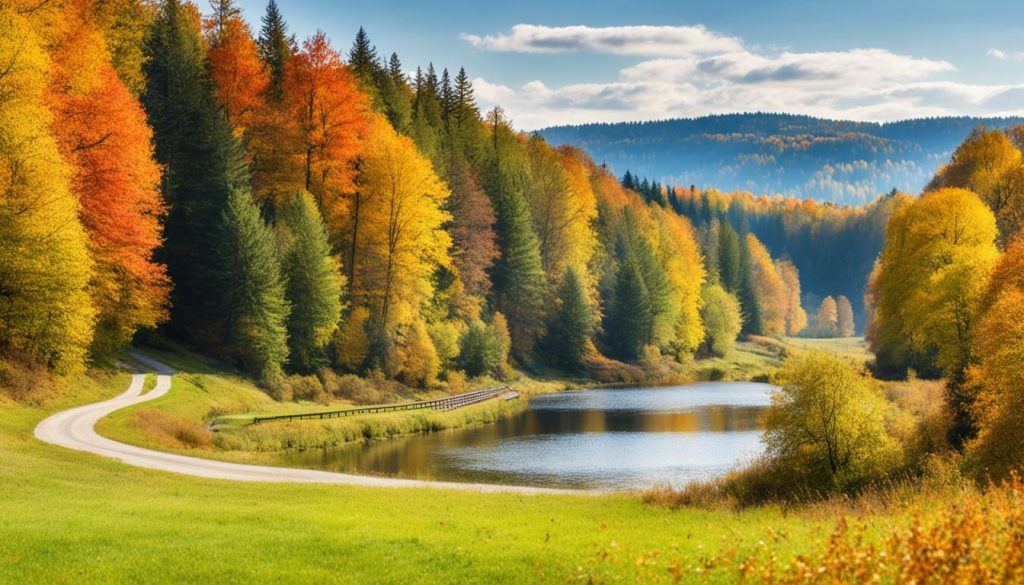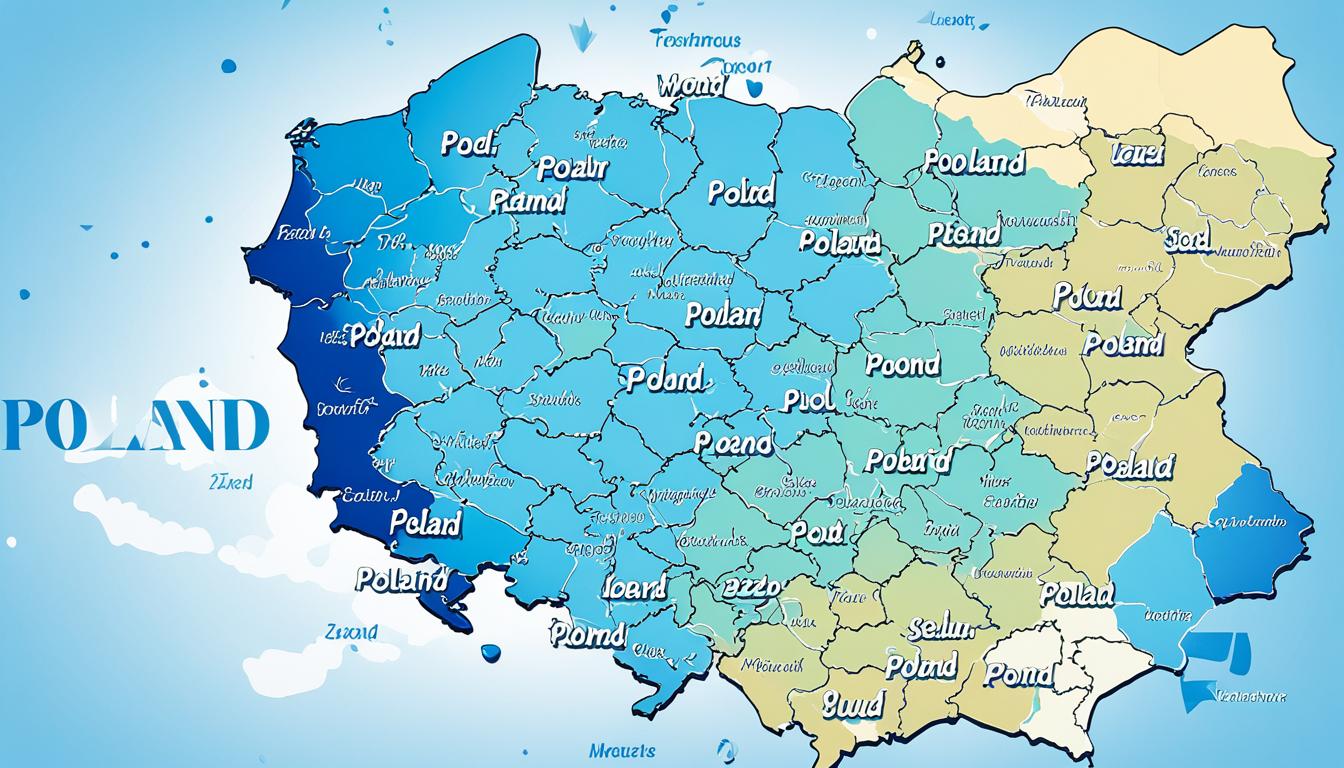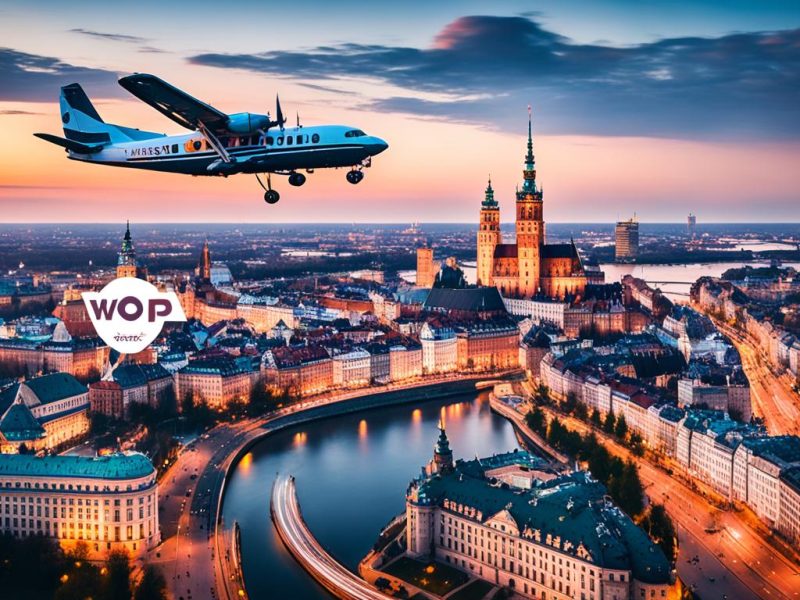Heading to Poland? It’s vital to know about the weather and climate there. This guide gives you a full look at Poland’s weather, making it easy for you to plan. Whether city adventures or countryside escapes are your goal, understanding local weather is key. Enjoy your trip without any weather surprises.
Key Takeaways
- Poland boasts a diverse climate, with significant variations across different regions.
- Understanding the seasonal weather in Poland can greatly enhance your travel experience.
- Familiarise yourself with regional climate conditions in Poland for specific travel planning.
- Timely tips and insights are provided to prepare for the weather during your stay.
- The guide serves as a practical resource for both first-time visitors and seasoned travellers.
Understanding Poland’s Seasonal Weather Variations
In Poland, as the seasons change, so does the weather. Travellers and locals see the climate shift throughout the year. Knowing about Poland seasons, the temperature changes, and the amount of precipitation is key. It helps anyone looking to understand Poland’s unique weather. Let’s dive into the weather patterns each season brings.
The Four Seasons of Poland: What to Expect
Poland has a true European climate with four distinct seasons. Spring brings mild weather; summer is warm and full of life. Autumn paints the land in golden colours, and winter covers it in snow. Each season adds to the climate variety Poland is famous for.
Temperature Fluctuations Throughout the Year
Knowing the temperature range in Poland helps with planning trips or daily activities. January’s cold is far from July’s warmth. They are the coldest and hottest months. Here’s a quick look at the temperatures:
| Season | Temperature Range (°C) |
|---|---|
| Spring | 5 – 15 |
| Summer | 18 – 30 |
| Autumn | 5 – 15 |
| Winter | -5 – 3 |
Typical Precipitation Patterns in Poland
Understanding precipitation is as crucial as temps. Spring and autumn have moderate rain. Late summer might see heavy showers. Winter’s snow varies, with the north getting less and the mountains more.
- Spring: Moderate rain, increasing towards the end
- Summer: Occasional heavy showers and thunderstorms
- Autumn: Frequent but lighter rainfall
- Winter: Snowfall, heavier in the south
Getting to know these weather patterns helps people adjust to life in Poland. It prepares them for the diverse weather the country offers.
Weather in Poland: Regional Differences Exposed
Poland’s landscape creates a variety of regional climates. You will find everything from breezy coasts to towering mountains. Knowing the weather variations Poland has is key for those planning a visit or living there.

The Polish coastal weather in the north has a milder climate. This is thanks to the Baltic Sea. Summers here are warm but not too hot, and winters are less harsh than inland. It’s perfect for enjoying mild weather throughout the year.
In the south, the mountainous weather Poland has in areas like the Tatra Mountains is more extreme. Expect sharp temperature drops and heavy snow in winter. This makes it great for winter sports. But in summer, the high altitudes bring a cool, pleasant climate.
- Spring on the coast means brisk, refreshing breezes.
- In the mountains, summer brings crisp air and clear skies.
- Fall shows off bright foliage in the highlands.
- The coast experiences ‘Polish Golden Autumn’, marked by storms.
Knowing about regional climate Poland has helps travellers and locals prepare for its different weather conditions. Whether you want the calm Polish coast or adventurous mountains, understanding these differences is crucial for planning.
Planning Your Visit: Best Times of Year for Travellers
When you’re planning to visit Poland, choosing the right time is crucial. It ensures your trip meets your expectations for activities and weather. Each travel season in Poland brings something special. From snowy winters perfect for skiing to warm summers filled with festivals.
If you love winter sports, consider visiting from December to February. This is when Poland’s snow is perfect for skiing in mountains. For those drawn to spring, plan your visit between March and May. Flowers bloom everywhere, making cities and countryside beautiful.
Summer, from June to August, is great for festival lovers. It offers long days filled with music and theatre in great weather. Autumn, from September to November, is less crowded. It’s a time to see beautiful fall colours and enjoy mild temperatures.
| Travel Season | Optimal Activities | Weather Advice |
|---|---|---|
| Winter (Dec-Feb) | Skiing and snowboarding in Tatra Mountains | Equip for cold temperatures and heavy snow |
| Spring (Mar-May) | Nature walks and city exploration | Light layers and waterproof footwear |
| Summer (Jun-Aug) | Festivals and beach holidays along the Baltic coast | Summer attire and sun protection |
| Autumn (Sep-Nov) | Hiking and enjoying the fall foliage | Warm clothing and comfortable hiking boots |
To make the most of your trip, match your travel dates with the travel seasons in Poland that suit your interests. Each season brings its own beauty, making your trip memorable.
Conclusion
Planning a trip to Poland means getting to know its weather well. This weather guide for Poland has shared important details. It helps you plan your travel to Poland carefully. From exciting ski trips in the snowy Tatra Mountains to summer festivals in Kraków, knowing the seasons is key. Spring and autumn in Poland are beautiful, with their own special sights and needs.
Poland’s weather varies a lot, from windy Baltic coasts to calm, mild forests in the lowlands. This guide has explained the different weather patterns. The Poland climate summary here is both a guide and a friend for your journeys. It helps you know what to expect weather-wise and plan better visits.
Your journey through Poland, for fun or daily life, doesn’t have to depend on the weather. Knowing about the weather helps you enjoy cities and mountains alike. This travel guide to Poland makes sure you’re ready. It mixes careful planning with the chance to enjoy things you didn’t expect. This way, your experiences are shaped by the weather in a good way.
FAQ
What are the general climate conditions in Poland?
Poland has a mix of climates. It’s influenced by the sea and the continent. This means weather varies a lot, with warm summers and cold winters.
How do the weather trends vary between the seasons in Poland?
Spring in Poland gets warmer and days last longer. Summer can get really warm sometimes. Autumn cools down and leaves change colour.
Winter is cold and snowy, especially in the mountains.
What is the best time of year to travel to Poland for favourable weather conditions?
The best time to visit Poland is from May to September. During these months, the weather is nice, perfect for exploring and outdoor fun.
Are temperature fluctuations significant in Poland throughout the year?
Yes, Poland’s temperatures change a lot during the year. January is the coldest, sometimes below freezing. July and August can get above 30°C (86°F).
Can you describe the typical precipitation patterns in Poland?
Poland’s rain spread out through the year. The wettest months are July and August, because of thunderstorms. The mountains get a lot of snow in winter.
How do the climate conditions vary in different regions of Poland?
Poland’s north coast is milder and steadier, thanks to the Baltic Sea. The south, like the Tatra Mountains, has more snow and colder temperatures.
What are some weather-related tips for travellers visiting Poland?
When visiting Poland, pack for all weathers. Bring layers, a waterproof jacket or a warm coat. Always check the forecast for where you’re going.
Are there any particular months that are best for engaging in winter sports in Poland?
For winter sports, December to February are great in Poland. The mountains have lots of snow then, perfect for skiing and snowboarding.
Is summer a good time to visit Poland for festivals and cultural events?
Yes, summer is great for festivals and culture in Poland. There are lots of vibrant events showcasing Poland’s traditions and modern culture.
Should I be concerned about regional weather variations when planning my travel itinerary in Poland?
Definitely consider the weather in different parts of Poland when planning. The coast, central areas, and mountains all have different weathers. It affects what you can do and what to pack.



